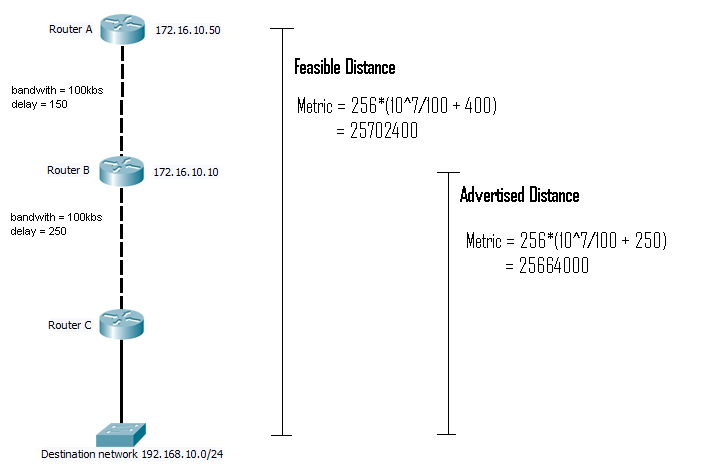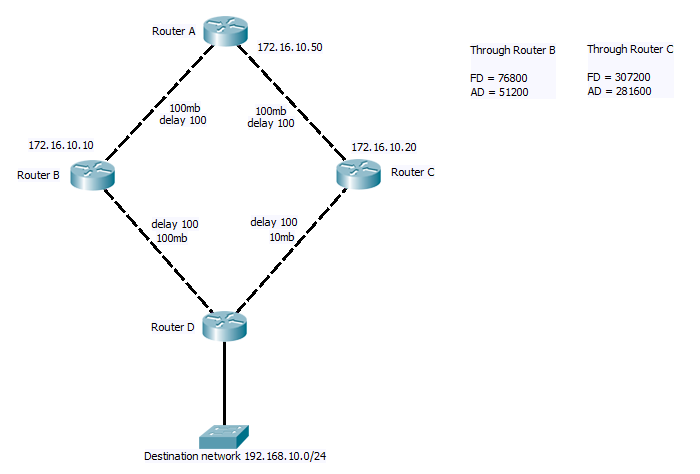Well after last post I thought it would be good to get together some simple diagrams to help explain the different terms and how they are use in EIGRP.
So to start with lets look at the difference between the Feasible distance and the advertised distance.

Fig 1
We are assuming that we are router A in this set up looking to reach the destination network 192.168.10.0/24. When router B sends it update packet to router A it will contain an entry for this destination network, this will include the bandwidth, delay, reliability and load values along with the MTU (100kb and 250) delay for router B’s downstream link. Router A will then computer the metric from these, This will be the advertised distance. Router A will then add on any additional values from it’s link to the neighbour and recompute the metric, this will become the Feasible distance.
These two values are used for determining the best path to the destination network, and also for deciding if a router should be considered a valid back up route to a network. So lets add some more routers.
So now there are two paths, and the EIGRP needs to determine which one to use. Just like you would expect from any routing protocol when DUAL runs it will pick the route with the lowest Feasible Distance and assign this route as the Successor. So in the example above the Feasible distance (FD) going through router B is 76800, so this route becomes the Successor. Each alternate route is then examined and the Advertised Distance (AD) for each is compared to the FD of the Successor route (76800). If the AD of the alternative is less than the FD of the Successor, the route is added as a Feasible Successor (FS). This means it can be made the active route if the Successor fails, with out any need for re-computation. If the AD is grater than the FD then the route will be ignored. This simple little formula insures there can be no loops in the routes. However as we can see in this case it can also rule out valid redundant links, here the route through C would not be added as a FS.
Rather than an instant fail over, now if router B fails, router A will have to send a query out to router C, wait for the reply to return and re-computer through DUAL.
Hopefully this post helps make clear exactly how EIGRP determines the best routes and how it acts in the event of topology changes. I also hope it shows how it takes the best parts of the distant vector protocols, borrows some things from link state, to achieve a low overhead, fast and efficient solution.
DevilWAH

